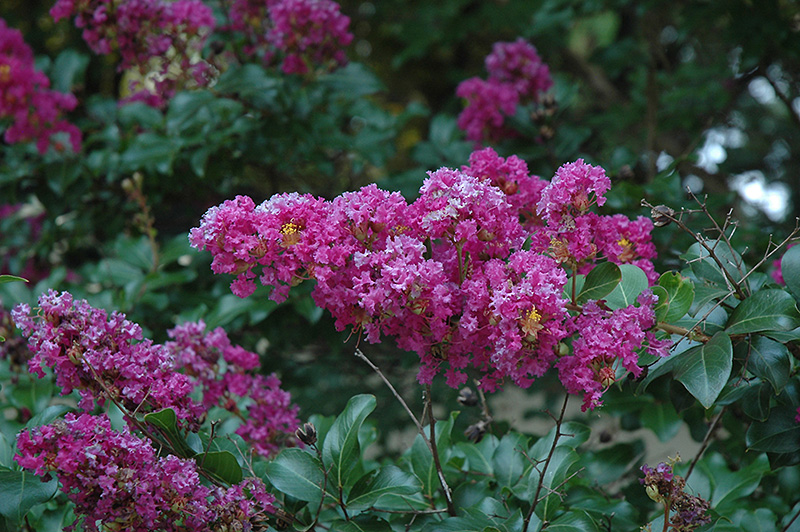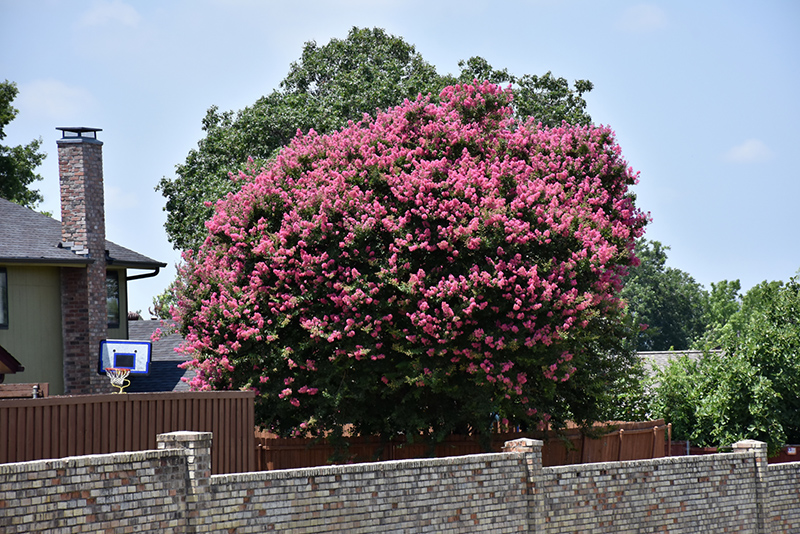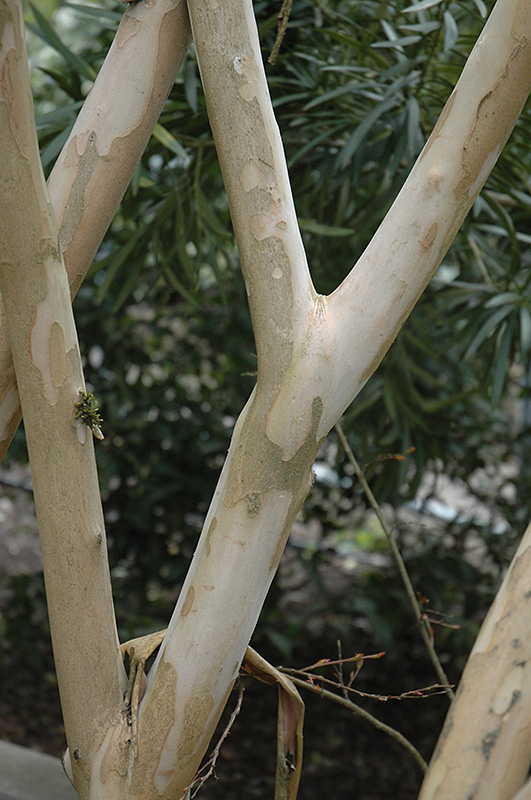Height: 12 feet Spread: 10 feet
Sunlight:
Hardiness Zone: 5b Other Names: Crape Myrtle, Crepe Myrtle Description: Delightfully full of clusters of lavender-pink flowers throughout the summer and into autumn; attractive exfoliating bark; resistant to mildew. Ornamental Features Crape Myrtle, Zuni is covered in stunning panicles of lavender frilly flowers at the ends of the branches from early to late summer. It has attractive dark green deciduous foliage which emerges coppery-bronze in spring. The oval leaves are highly ornamental and turn orange in fall. The peeling tan bark adds an interesting dimension to the landscape. Landscape Attributes Crape Myrtle, Zuni is a dense multi-stemmed deciduous shrub with a more or less rounded form. Its relatively fine texture sets it apart from other landscape plants with less refined foliage. This is a relatively low maintenance shrub, and is best pruned in late winter once the threat of extreme cold has passed. Deer don't particularly care for this plant and will usually leave it alone in favor of tastier treats. It has no significant negative characteristics. Crape Myrtle, Zuni is recommended for the following landscape applications; Planting & Growing Crape Myrtle, Zuni will grow to be about 12 feet tall at maturity, with a spread of 10 feet. It tends to be a little leggy, with a typical clearance of 3 feet from the ground, and is suitable for planting under power lines. It grows at a fast rate, and under ideal conditions can be expected to live for 40 years or more. This shrub does best in full sun to partial shade. It prefers to grow in average to moist conditions, and shouldn't be allowed to dry out. This plant should be periodically fertilized throughout the active growing season with a specially-formulated acidic fertilizer. It is very fussy about its soil conditions and must have rich, acidic soils to ensure success, and is subject to chlorosis (yellowing) of the foliage in alkaline soils. It is highly tolerant of urban pollution and will even thrive in inner city environments. Consider applying a thick mulch around the root zone in winter to protect it in exposed locations or colder microclimates. This particular variety is an interspecific hybrid. Crape Myrtle, Zuni makes a fine choice for the outdoor landscape, but it is also well-suited for use in outdoor pots and containers. Because of its height, it is often used as a 'thriller' in the 'spiller-thriller-filler' container combination; plant it near the center of the pot, surrounded by smaller plants and those that spill over the edges. It is even sizeable enough that it can be grown alone in a suitable container. Note that when grown in a container, it may not perform exactly as indicated on the tag - this is to be expected. Also note that when growing plants in outdoor containers and baskets, they may require more frequent waterings than they would in the yard or garden. Special Attributes In Eastern Washington & Oregon Crape Myrtles can have die back from our winters, depending on the winter. If it is a hard winter they can die completely so in the autumn put 4 inches of bark around their base going out to a 2 foot in diameter to protect the roots from dying. Crape Myrtles are one of the last things to leaf out in the spring, generally mid to late April or early May. If you are growing it in a container, be sure to protect it from cold temperatures and winds by taking it into a garage or shed with a window, don't forget to give it water once every 2 to 3 weeks. ![]()
![]()
![]()
![]()
![]()
![]()
![]()
![]()
![]()
![]()
![]()
![]()
![]()
![]()
![]()
![]()



